 |
 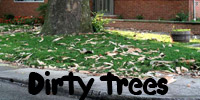 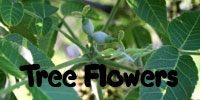 |
Welcome to bobklips.com, the website of Bob Klips, a plant enthusiast living in Columbus, Ohio. May 10, 2008
Deep Woods Preserve, Hocking County, Ohio Deep Woods is a privately owned nature preserve that lies SE of S. Bloomingville, Hocking County, OH.
Several forest types occur here, including mature
oak/hickory, beech-hemlock maple, and riparian
forest corridor. There are also seral stages ranging from mowed fields through
weedy old fields and young pioneer forest. The area includes ravines,
waterfalls, cliffs and caves. The rock types are sandstone, sandstone
conglomerate, and shale (streambanks).
One of the more interesting habitats at Deep Woods is a small open patch of elm/green ash swamp forest dominated by ferns and sedges. The ground is patterned with hummocks and hollows. Bon and I went there this day hoping in search of mosses. 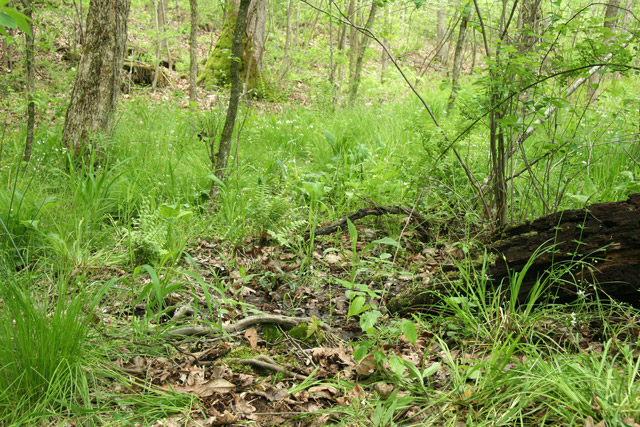 Open swamp at Deep Woods Preserve, May 10, 2008. On soil and spilling over onto some branches in a hollow in the swamp is a moss, Plagiothecium denticulatum. This is a typical habitat for this species, shown here along with Atrichum oerstedianum. 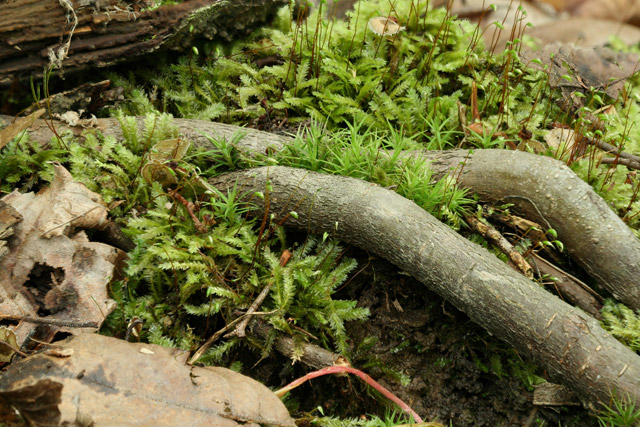 Plagiothecium denticulatum and Atrichum oerstedianum in swamp at Deep Woods Preserve,
Hocking County, OH, May 10, 2008. Plagiothecium denticulatum is
an especially shiny, light-green pleurocarp. (A pleurocarp, also called
a carpet moss, is a type of moss that lays flat and is branched, and
bears sporophytes in the corners of the branches.)
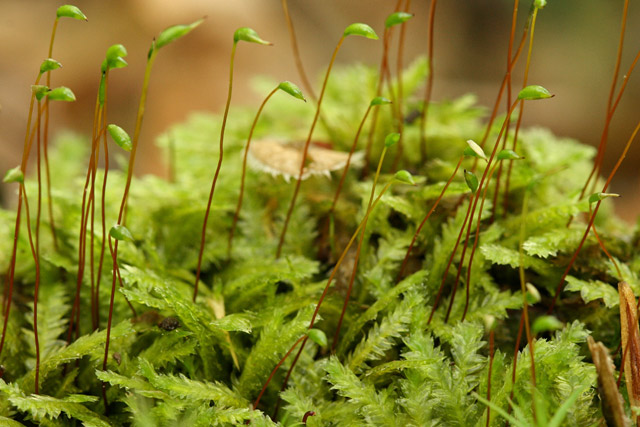 Plagiothecium denticulatum moss at Deep Woods Preserve, Hocking County, May 10, 2008. Plagiothecium denticulatum has stems and branches that tend to run horizontally. The upper and lower leaves are flat, but the side leaves are folded over. This gives the moss a distinctive flattened appearance, termed "complanate."
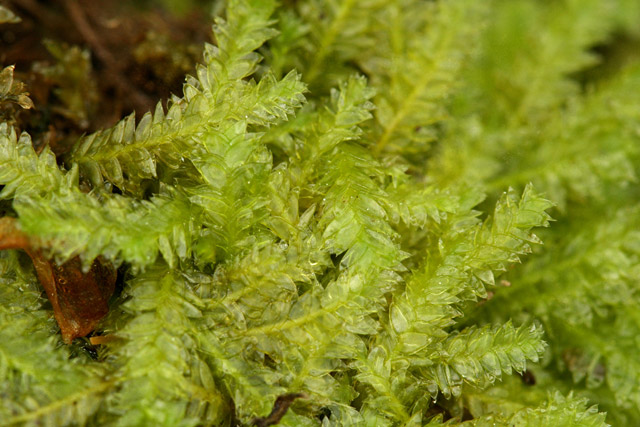 Plagiothecium denticulatum, Deep Woods Preserve, May 10, 2008. 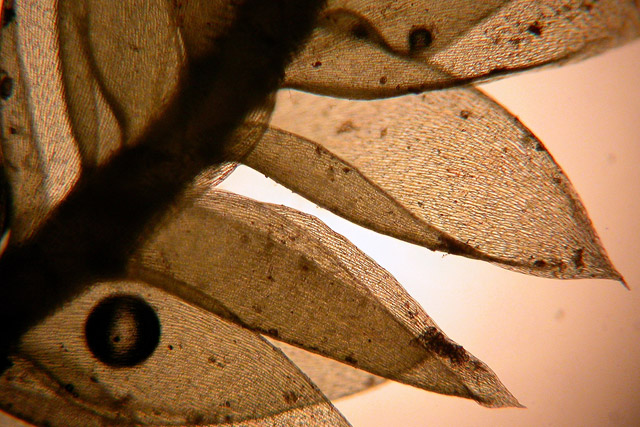 Plagiothecium denticulatum microscope view showing complanate (dorsi-ventrally folded) leaves. . An
intriguing woodland fungus occurs in the drier hummocky portions of the
swamp. It's a large dark cup fungus (Class Ascomycota) noted for its
apearance in spring, Urnula craternum.
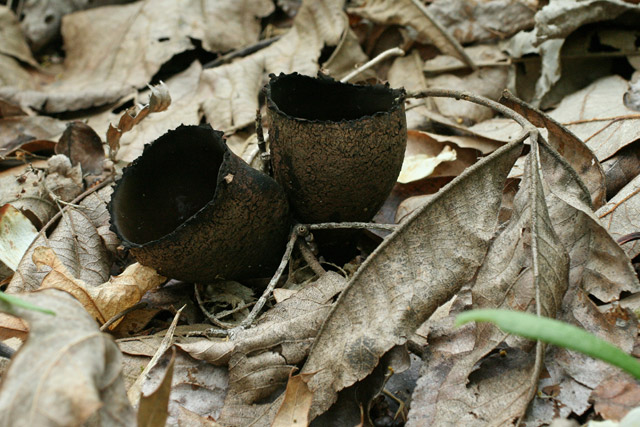 Cup fungus Urnula craternum, Deep Woods Preserve, Hocking County, OH May 10, 2008.
There
are three classes of fungi, distinguished by the structures that
produce the sexual spores. The Class Ascomycota are called "sac fungi,"
as they produce their spores (called "ascospores") in a swollen
tubular sac-like "ascus." There are typically 8 spores per ascus. The
asci are packed together tightly in a smooth single layer (with sterile
cells interspersed) called the "hymenium." The hymenium lines the large
fungus body, called an "ascocarp." As in the example here,
ascocarps are often cup-shaped, hence many Ascomycertes are also
refered to as "cup fungi."
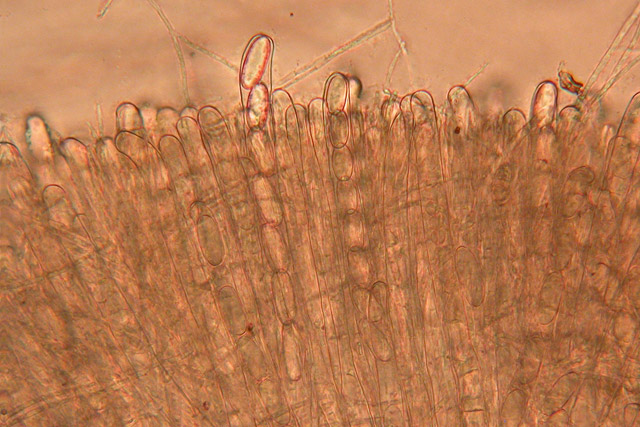 Cross-section view of the hymenum of Urnula craterinum, showing severa; asc each with 8 ascospores. There are wildflowers, too. In the genus Oxalis (wood-sorrels, family Oxalidaceae), Deep Woods is home to both a weedy alien, and a native woodland species. Both have trifoliolate leaves with the leaflets attached at the same point on the leafstalk, looking rather shamrock-like (although the Irish shamrock is a type of clover). 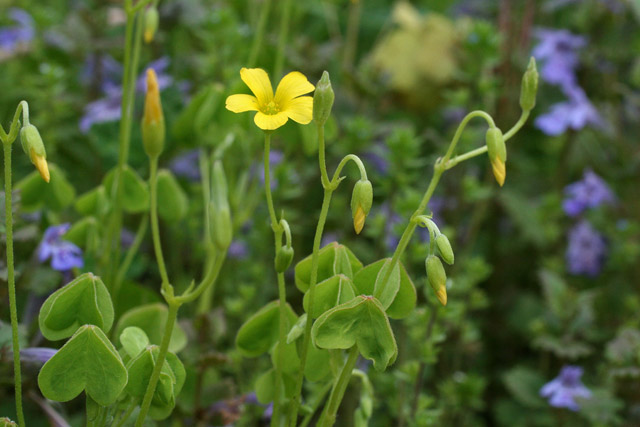 Oxalis europea, a common weedy wood-sorrel found on open disturbed ground,
Deep Woods Preserve, May 10, 2008. 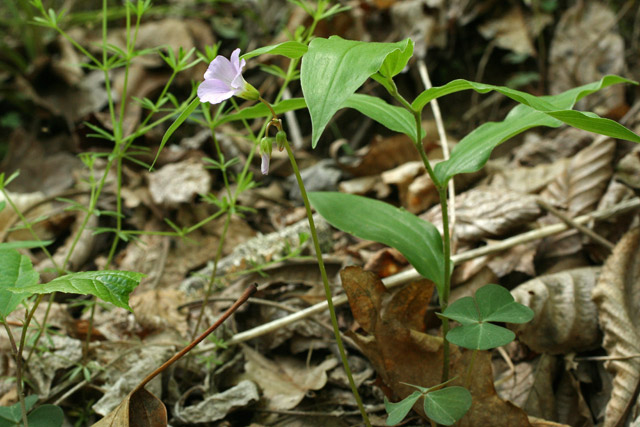 Oxalis violacea, a lovely native woodland wood-sorrel, Deep Woods Preserve,
Hocking County, OH, May 10, 2008. May 4, 2008
Deep Woods Preserve, Hocking County, Ohio The property is transected by a buried Ashland-Marathon petroleum pipeline corridor running north-south that includes a 23 m wide zone that is kept free of woody vegetation. The grassy ground there is a unique combination of openness and moistness, a good habitat for some bryophtes not common elsewhere at the site. 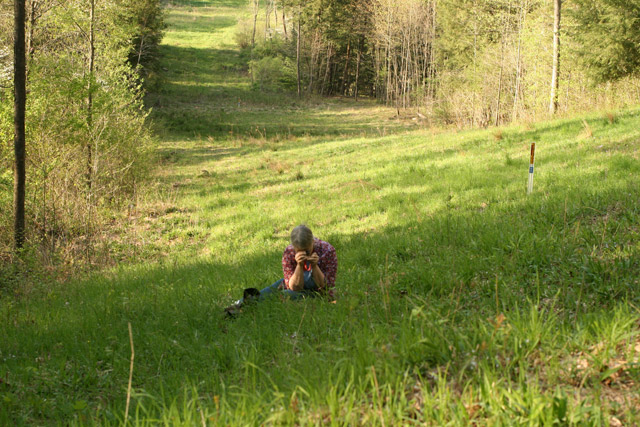 Bonney examining bryophytes at Ashland-Marathon Pipeline, Deep Woods Preserve, Hocking County, OH, May 4, 2008. One of the special bryophytes growing here is this medium-sized thallose liverwort, Asterella tenella, seen with abundant sporangiophores --umbrella-like structures from the edges of which hang spore cases.
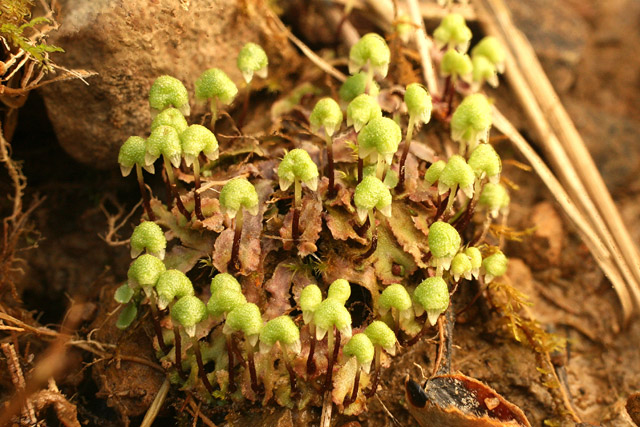 Asterella tenella, a thallose liverwort at Deep Woods Preserve, Hocking County, May 4, 2008. A
common moss on disturbed ground (soil at the base of windthrown trees
is a typical habitat) is a light green, low-growing acrocarp (a acrocarp is a
"cushion moss" that stands erect, is single-stemmed, and bears
sprophytes at the tips of its stems), Atrichum angustatum.
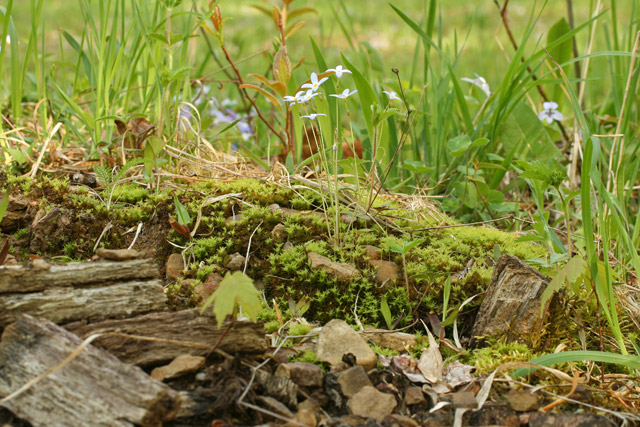 Atrichum angustatum moss (with dainty wildflower, bluets), Deep Woods Preserve, Hocking County, May 4, 2008. 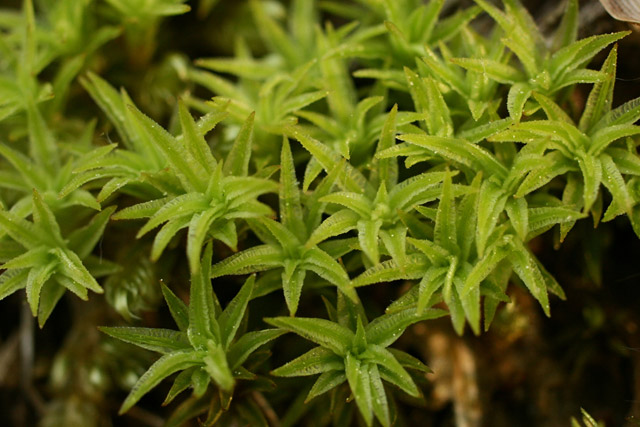 Atrichum angustatum moss, Deep Woods Preserve, Hocking County, May 4, 2008. A
delicate but abundant and conspicuous spring wildflower of open areas
is bluets (sometimes called "Quaker ladies"), of the family Rubiaceae
(the same family that includes coffee).
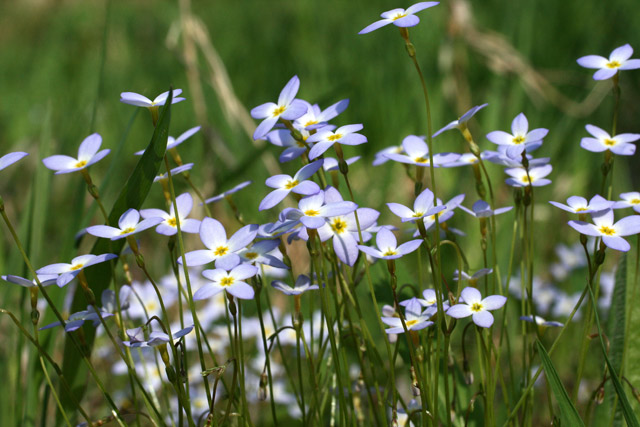 Bluets (Hedyotis caerulea, family Rubiaceae), Deep Woods Preserve, Hocking County. May 4, 2008. Bluets
illustrates an unusual mechanism, "heterostyly," that just a few plant species employ to
avoid inbreeding. The flowers come in two different types distinguished
by the lengths of the style (the upper portion of the pistil).
The long-styled "pin" flowers have short stamens and the
short-styled "thrum" flowers have long stamens. An individual plant only
bears one type of flower, and pollen from one type of flower isn't able
to fertilize flowers of the same type as its own. Thus the plants are
not merely self-incompatable, but they are incompatable with half of the plants in the population!
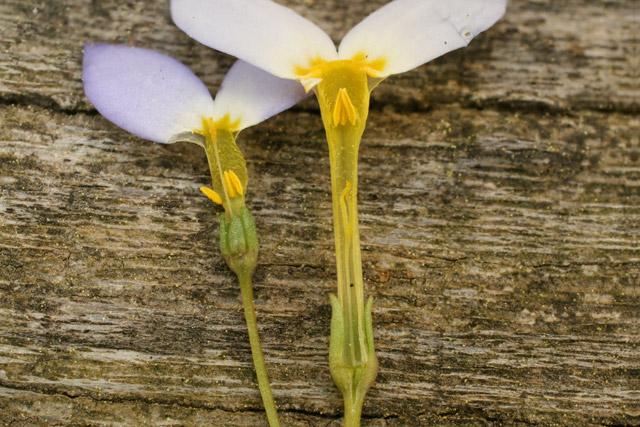 Hedyotis caerulea flowers split to show different style morphs, Deep Woods Hocking County, OH, May 4, 2008. The adjacent woods are fully stocked with spring wildflowers. Foamflower (Tiarella cordifolia, family Saxifragaceae), a fairly unusual rich-woods species of phlox, Phlox stolonifera, family Polemoniaceae, and sweet white violet (Viola blanda, family Violaceae) patiently stood still to have their pictures taken.
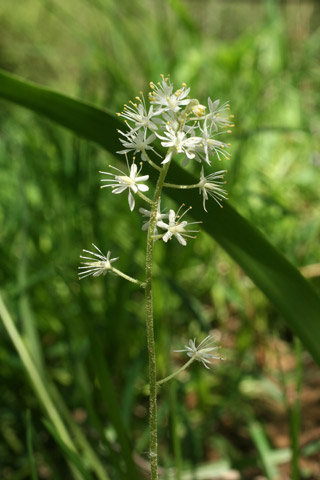 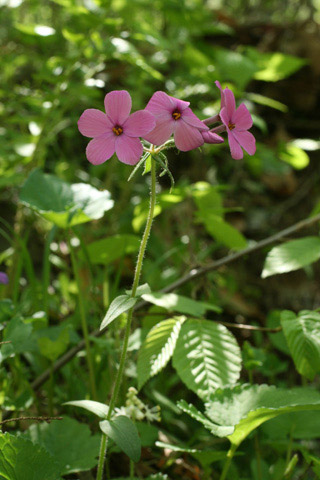 Left: Foamflower (Tiarella cordifolia, family Saxifragaceae). Right: creeping phlox (Phlox stolonifera, family Polemoniaceae, Deep Woods, Hocking County, May 4, 2008. 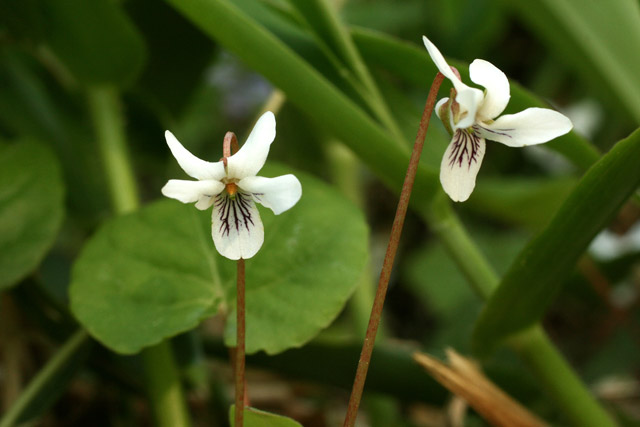 Sweet white violet (Viola blanda, family Violaceae). http://www.twipphoto.com More recent observations (next) |